Embed presentation
Download as PDF, PPTX
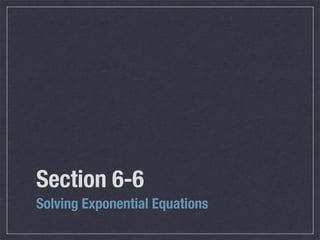
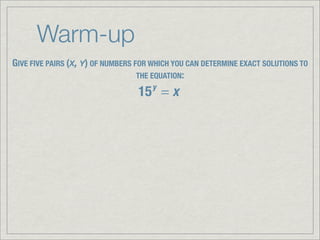
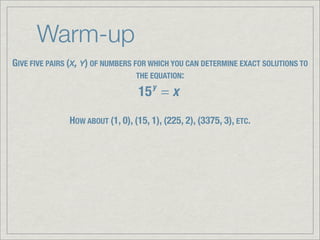
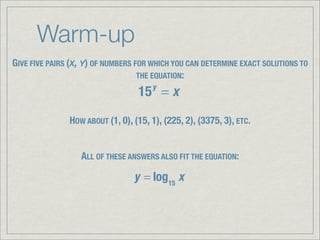
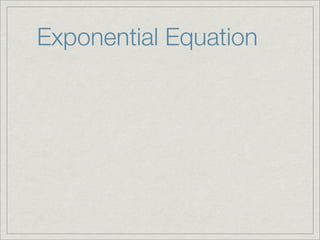



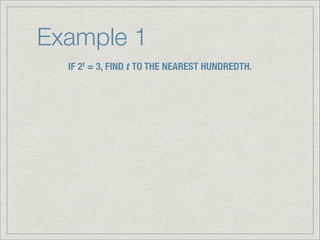

























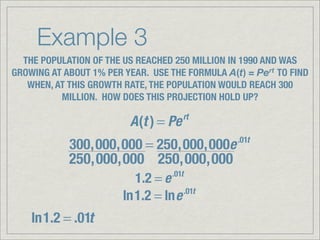




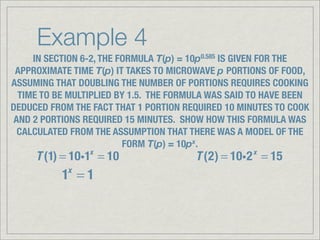





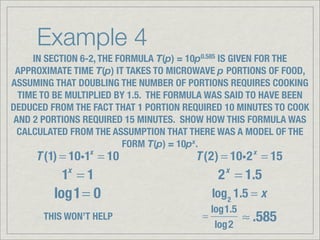


This document contains examples and explanations of exponential equations and logarithmic equations. It shows how exponential equations can be rewritten as logarithmic equations by taking the logarithm of both sides. It also explains how logarithmic equations with different bases can be converted using the change of base formula. Examples are provided to demonstrate solving exponential and logarithmic equations. The document also contains an example using an exponential growth model to project future population growth in the US.















































